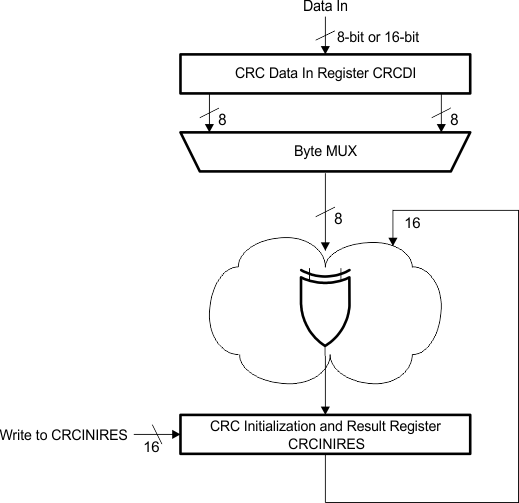SLAU367P October 2012 – April 2020 MSP430FR5041 , MSP430FR5043 , MSP430FR50431 , MSP430FR5847 , MSP430FR58471 , MSP430FR5848 , MSP430FR5849 , MSP430FR5857 , MSP430FR5858 , MSP430FR5859 , MSP430FR5867 , MSP430FR58671 , MSP430FR5868 , MSP430FR5869 , MSP430FR5870 , MSP430FR5872 , MSP430FR58721 , MSP430FR5887 , MSP430FR5888 , MSP430FR5889 , MSP430FR58891 , MSP430FR5922 , MSP430FR59221 , MSP430FR5947 , MSP430FR59471 , MSP430FR5948 , MSP430FR5949 , MSP430FR5957 , MSP430FR5958 , MSP430FR5959 , MSP430FR5962 , MSP430FR5964 , MSP430FR5967 , MSP430FR5968 , MSP430FR5969 , MSP430FR5969-SP , MSP430FR59691 , MSP430FR5970 , MSP430FR5972 , MSP430FR59721 , MSP430FR5986 , MSP430FR5987 , MSP430FR5988 , MSP430FR5989 , MSP430FR5989-EP , MSP430FR59891 , MSP430FR5992 , MSP430FR5994 , MSP430FR59941 , MSP430FR6005 , MSP430FR6007 , MSP430FR6035 , MSP430FR6037 , MSP430FR60371 , MSP430FR6041 , MSP430FR6043 , MSP430FR60431 , MSP430FR6045 , MSP430FR6047 , MSP430FR60471 , MSP430FR6820 , MSP430FR6822 , MSP430FR68221 , MSP430FR6870 , MSP430FR6872 , MSP430FR68721 , MSP430FR6877 , MSP430FR6879 , MSP430FR68791 , MSP430FR6887 , MSP430FR6888 , MSP430FR6889 , MSP430FR68891 , MSP430FR6920 , MSP430FR6922 , MSP430FR69221 , MSP430FR6927 , MSP430FR69271 , MSP430FR6928 , MSP430FR6970 , MSP430FR6972 , MSP430FR69721 , MSP430FR6977 , MSP430FR6979 , MSP430FR69791 , MSP430FR6987 , MSP430FR6988 , MSP430FR6989 , MSP430FR69891
15.3.1 CRC Implementation
To allow parallel processing of the CRC, the linear feedback shift register (LFSR) functionality is implemented with an XOR tree. This implementation shows the identical behavior as the LFSR approach after 8 bits of data are shifted in when the LSB is 'shifted' in first. The generation of a signature calculation has to be started by writing a seed to the CRCINIRES register to initialize the register. Software or hardware (for example, the DMA) can transfer data to the CRCDI or CRCDIRB register (for example, from memory). The value in CRCDI or CRCDIRB is then included into the signature, and the result is available in the signature result registers at the next read access (CRCINIRES and CRCRESR). The signature can be generated using word or byte data.
If a word data is processed, the lower byte at the even address is used at the first clock (MCLK) cycle. During the second clock cycle, the higher byte is processed. Thus, it takes two clock cycles to process word data, while it takes only one clock (MCLK) cycle to process byte data.
Data bytes written to CRCDIRB in word mode or the data byte in byte mode are bit-wise reversed before the CRC engine adds them to the signature. The bits among each byte are reversed. Data bytes written to CRCDI in word mode or the data byte in byte mode are not bit reversed before use by the CRC engine.
If the checksum itself (with reversed bit order) is included into the CRC operation (as data written to CRCDI or CRCDIRB), the result in the CRCINIRES and CRCRESR registers must be zero.
 Figure 15-2 Implementation of CRC-CCITT Using the CRCDI and CRCINIRES Registers
Figure 15-2 Implementation of CRC-CCITT Using the CRCDI and CRCINIRES Registers